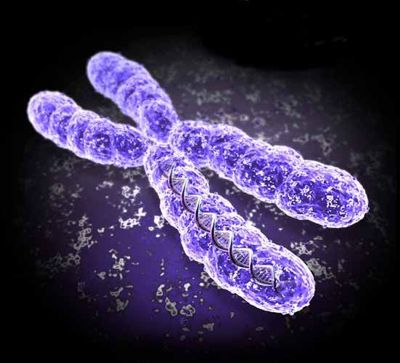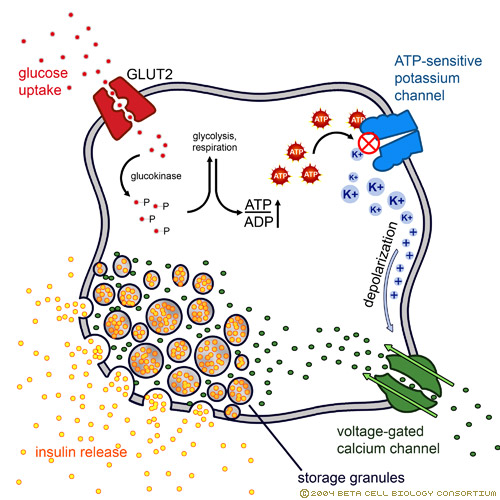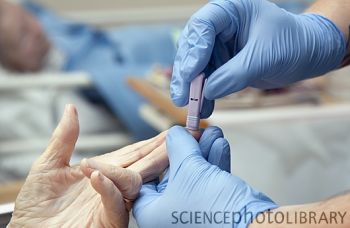Team:Missouri Miners/Project Background
From 2011.igem.org
Project Background
Background
Type one diabetes is characterized by the body’s inability to produce insulin and is caused by the death or malfunction of the ß-cells in the pancreas. Insulin is the hormone that decreases the blood glucose concentration by inducing the cellular intake of glucose.
Insulin is produced in the Islets of Langerhans (a section of the pancreas) where glucose in the blood is detected. ß-cells in this region produce insulin by monitoring the ratio of ATP (adenosine triphosphate) versus ADP (adenosine diphosphate). When the ATP level is increased the K+ channels close, creating an increase of Ca+ ions in the cell. The unbalance of ions signals the golgi complex to secrete insulin. If the ß-cells die or malfunction then insulin cannot be produced. (http://www.abcam.com/index.html?pageconfig=resource&rid=10602&pid=7)
Project Justification
In the United States alone, it is estimated that 3 million people are affected by type one diabetes. Complications that arise due to this disease include heart disease, stroke, high blood pressure, blindness, kidney disease, and neuropathy. The American Diabetes Association has estimated that diabetes costs America over $200 billion per year in diagnosis and treatment (http://www.diabetes.org ).
Project Inspiration
Our group was brainstorming project ideas one day when a team member spoke up and announced that he has been afflicted with type one diabetes since he was a child. He asked the group if synthetic biology could be used to help people like him with this disease. Research into the topic soon revealed that, in 2007, the Taipei iGEM team had already come up with an answer (http://parts.mit.edu/igem07/index.php/Taipei). They had designed a system with a glucose sensitive promoter and an eYFP reporter gene. This gene could be substituted for an insulin production gene, so that when glucose is present in the environment, insulin is produced. This system has applications in insulin pump technologies.
Unfortunately, biobricks for this complete system were not entered into the registry. Our team decided to continue their work so these biobricks could be available on the registry. In addition to submitting this part to the registry our team wanted to modify the part so that is was sensitive to glucose at multiple concentrations. By doing this, we could use the biobrick to develop an economical glucose sensor.
Project Goal
Our goal is to model a system that can measure glucose levels at different concentrations. In the future, this system could lead to cheaper blood glucose testing devices or an economic and efficient insulin pump. To achieve this goal we are utilizing the EnvZ-OmpR two-component regulatory system. If the OmpR binding region were to be mutated, theoretically, the system would be sensitive to glucose at different glucose concentrations. Each of these mutations are then be isolated and characterized. Once an adequate number of mutants is identified the fluorescence reporter gene could be substituted with other reporter gene (color gene) to make an inexpensive glucose sensor. eYFP could also be replaced with insulin so the system produces insulin at different concentrations of glucose. In the future, this system could then be used as an insulin pump and replace insulin in the body when needed.
 "
"








